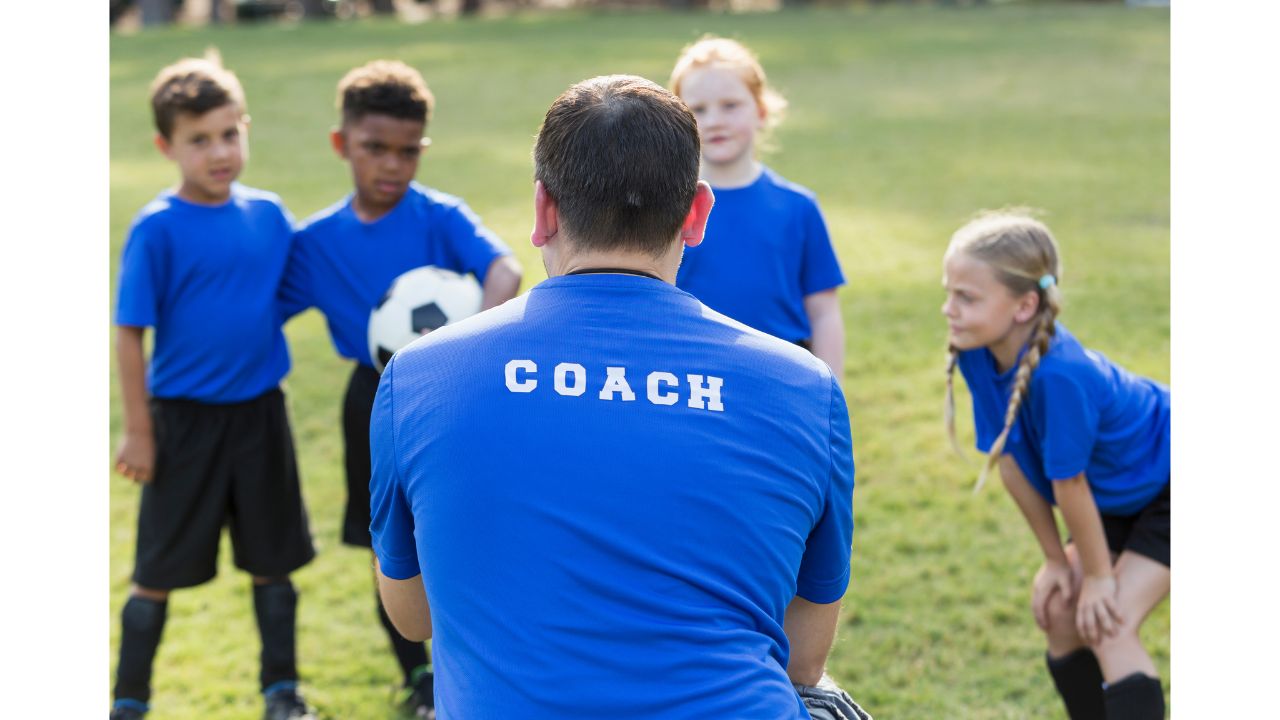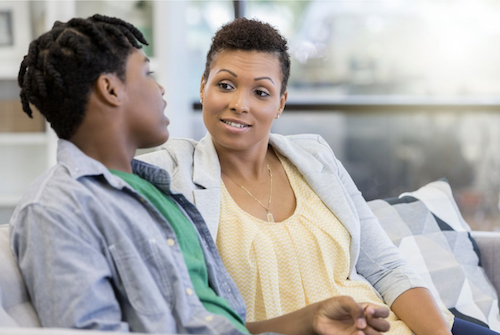Late summer is full of transitions, which makes it a great time to notice, reflect, and be intentional as we strike a balance for the new school year.
There are still many weeks of summer weather to enjoy. And yet, the evenings have that tinge of coolness that makes us know fall is coming. You and your kids may be discussing questions about school or you may be have already sent kids off to school. Your family atmosphere might have a mix of anxiety and excitement, as well as a bit of sadness that summer or a current phase of life is ending.
It’s a good time to take care of yourself by striking healthy balances so that you can model what you want to see in your kids.
I’m seeing many posts about practical details on how to get ready for the new school year, so I wanted to offer something a bit different for you. In this post, I’m offering three useful ways to help you and your family feel a greater sense of balance as you move through a transition to a new season and a new school year.
These tips will serve you during any time of transition.
Emotional Balance: Use presence, curiosity, and connection with your values to calm anxiety
As our kids enter new schools and/or new grades or phases of life, many emotions rise – for them and for us. Uncertainty is both stressful and exciting…Will I like my new teachers / my child’s new teachers? How can I keep old friends and make new ones? How do I adjust to a new schedule and more work?
When these questions are swirling, it can help to pause, feel your feelings, and consider your values and what you care about most.
For example, when kids are facing worries about whether they will like their teachers or the other kids in their classes and be liked themselves, you can help them slow down and get curious.
- Notice what memories or experiences or fantasies are coming up. Ask your child or teen questions to help them understand what they are feeling. When listening, avoid commenting or judging. Just listen and make subtle empathic comments – “Oh, that must have been hard” or “Hmm, what else happened/could happen?
- Feel where your emotions are in your body and describe what they feel like. This gets easier with practice, and is a helpful practice for both you and your child to learn. It builds emotional intelligence. “Where in your body do you feel nervous/sad/ scared?” “How would you describe those feelings?” “What are they like?” Invite metaphors or similes to help describe feelings.
- Get curious about feelings and needs. “I wonder why I’m feeling ________?” “What do I need right now?” “How might I get that need met?”
- Ponder what matters to you. “What do I value in a friend / teacher / coach?” “How do I like to use my time?” “What makes me feel safe and cared for?”
These are questions you can write down for yourself on an index card to refer back to when you need some ideas of how to respond to big and confusing feelings in yourself and your child.
Social Balance: Honor your own feelings and needs as well as those of others
Social balance has been and continues to be a big topic in my house over the years. With the new school year come new people and relationships to navigate, both for us and for our children. There are several things you can do to help create more ease in these relationships.
Honor your own feelings and needs:
- Help your child notice what qualities they value in a friend. You can talk about ways you appreciate your own friends and family members to start building a vocabulary of human qualities. When your child expresses happiness from being with another child, you can ask about what they like in that person. They can learn to say things like, “Thank you for being so thoughtful” or “It meant a lot to me that you stayed with me when I was feeling nervous to talk with that teacher.” This way they are growing skills of appreciation and self-expression.
- Teach your child how to sort through what behaviors and qualities are upsetting them when your child is hurt, angry, or upset by another person. This helps your child be able to give specific feedback to that person when they next interact. For example, “I don’t like it when you push me. Can you just ask me to move instead?” Or, “When I’m talking to you and you’re on your phone, I don’t feel like you are listening. Could you put your phone down for a few minutes?”
Honor the feelings and needs of others, especially of those who are new or less included:
- Show your child how to befriend and include others who are new. When children join your child’s class, especially kids who are new to speaking English, you can invite them over and possibly include their parents, especially if they are young. Their parents are also adjusting to a new place and community, and are likely to appreciate your friendliness. Consider planning an activity that doesn’t require much conversation, but can still be fun to do together. You can meet at a playground, do a simple craft together, or play an easy game together. Keep the time short at first so that you can have everyone part ways while they are still having fun. We have done this many times over the years and made friends from all over the world. It’s a win win!
- Teach your child to notice who is left out and discuss ways to bring them in. You can do this by example by talking about who looks like they could use a friend and then showing your child how to strike up a conversation. At bedtime, you can ask your child how they showed kindness or friendliness that day, and how they included someone. This shows your child that you value these qualities. Then you can discuss how it went. If your child is worried about being left out of their own friend group if they befriend someone new, you can also talk about how to help their friends be more curious and friendly, too.
If you are more introverted and/or find these ideas are harder for you, consider scheduling a Complimentary Clarity Call. I can help you grow these skills in yourself, too!
Physical Balance: Adapt your schedule to the new school year while having fun
What we do influences what our kids do. Getting good sleep, eating right, and moving our bodies starts with us. I know this can be a frustrating truth that we must “walk our talk” from personal experience, and yet it’s worth remembering. Our children learn more from what we do than what we say.
So, as we think about the new school year, here are a few ways to seek more balance as you meet your physical needs:
Sleep
- Consider how much sleep your child needs and how much sleep you need to be able to wake up naturally. This gets harder to gauge with teenagers, but is still worth considering. When will you and your children need to get up to be ready without stress and rushing during the school year? When will you need to go to bed in order to get the sleep you need? How can your family be more screen-free before bed? As I wrote in “Sleep Tips for You and Your Family,” sleep is the magic potion which makes everything in your life go more smoothly.
Move
- Build in exercise as part of your family’s day. Many of us struggle to find time to exercise with busy schedules, especially at the start of the new school year. Yet exercise helps reduce stress and releases powerful endorphins that help us feel happier and more at ease. How can you create 10-20 minute bursts of exercise in your day? Can you walk to school or the bus stop? How about a relay race to get everything from the school day inside and put away followed by washing hands and a snack? Can you take a 10 minute walk at work as a break? What about playground time after school or a family dance party, walk, or charades for 10 minutes after dinner? Exercising together and actively playing with our kids helps them feel connected with us and therefore more cooperative, too!
Eat
- Eat together. It’s easy to slip into eating separately when activities, sports practices, and work schedules dominate our days, and this will inevitably happen some of the time. However, scheduling at least a few meals together or making a point of having dinner together most nights each week makes a big difference in personal and family well-being. You might need to get creative and serve the veggies as “appetizers” at 5pm and then have the rest of dinner when everyone is home. Or maybe you all have breakfast together. Over three decades of research have shown the huge benefits of family dinners. Read more at thefamilydinnerproject.org and schedule a Clarity Call with me if you need help figuring out how to make family meals happen.
Overall Balance: Focus on one thing at a time
It’s easy to feel overwhelmed with the many aspects of entering the new school year. The best way to lower anxiety is to slow down and do one thing at a time. Make a list of the things swirling in your head (even if it’s in the middle of the night), and then prioritize them.
These questions can help you prioritize and enjoy this time of transition to the new school year:
What is most important right now?
Which systems can I put in place to create more ease and set my kids and myself up for success?
Are there deadlines I need to honor? Add these timeline items directly to your calendar with reminders.
How can we bring a spirit of connection and playfulness to the things our family needs to do?
I’m here if you need support and partnership. Schedule a Complimentary Clarity Call and we’ll have fun working together.
Breathe and know that you can do whatever you set your mind and heart to doing, one step at a time.
Related Blogs:
From End-of-Summer Blahs to New Season Excitement: Mindset Shifts that Generate Energy
Who I serve: I coach parents from coast to coast in the US and internationally. Thanks to Zoom, I am currently coaching parents from Boston to Seattle, Connecticut to California, as well as New York, Ohio, and Colorado. I’ve worked with parents in Bermuda, Japan, Portugal, and Canada as well. I’m grateful for these global and domestic connections!











Leave A Comment